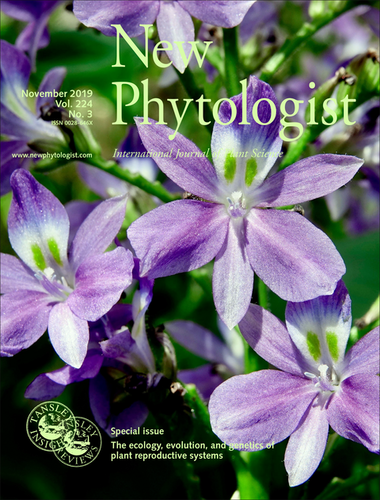The Ecology, Evolution, and Genetics of Plant Reproductive Systems
The study of plant reproductive systems provides crucial insights into ecological interactions and the process of evolutionary change. Reproductive success is closely allied to overall fitness, and understanding the mechanisms and drivers of reproductive fitness can help us understand the causes and consequences of the remarkable diversity of plant reproductive strategies.
This special issue of New Phytologist explores the ecology, evolution and genetics of plant reproductive systems, a highly interdisciplinary area of research that has been championed and developed by Professor Spencer Barrett of the Department of Ecology and Evolutionary Biology (EEB). The collection has its origins in a symposium held in August 2018 to mark Barrett’s retirement from the University of Toronto after 40 years. The symposium brought together leaders in the field to celebrate his outstanding career, and share new insights and views on the topic of plant reproduction. The New Phytologist Trust supported the symposium alongside EEB and the Faculty of Arts and Science at the University of Toronto.
This landmark collection of articles covers primarily new research but also includes reviews, viewpoints and commentary and is characterized by a diversity of approaches including theory, ecology, natural history, evolution, genetic and genomic approaches to the study of plant reproductive systems. Of particular significance is the fact that 25 of the 37 contributions in the special issue include current or former members of EEB and the former Botany Department as authors. This reflects the strong international reputation and excellence of research on plant reproduction at the University of Toronto. Notable contributions to the special issue by current faculty members and collaborators include:
- Asher Cutter reviews the links between sexual selection, evolution of selfing and speciation
- Spencer Barrett synthesizes recent insights on the evolution and breakdown of the floral polymorphism heterostyly
- Ahmed Hasan, Jaspreet Duggal and Rob Ness investigate the consequences of recombination for the evolution of the mating type locus in Chlamydomonas reinhardtii
- Eddie Ho, Magdalena Bartkowska, Stephen Wright and Aneil Agrawal explore the population genomic consequences of facultative asexual reproduction in duckweed
- Jesse Hollister, Marc Johnson and Stephen Wright investigate how the loss of sexual reproduction and hybridization within the genus Oenothera shapes patterns of genomic diversity and gives rise to new species
- Madeline Peters and Art Weis model the combined effects of flowering time and spatial isolation in structuring genetic diversity
- James Thomson demonstrates the challenges associated with detecting time-series changes in pollinator service
- David Timerman and Spencer Barrett reveal the biomechanical properties of stamens driving transitions from animal to wind pollination in Thalictrum
This collection of studies serves not only as a tribute to Professor Barrett, but also as a rallying call for future researchers to focus their attention on the questions that remain unanswered and the research avenues that are yet to be fully explored. It is likely to be strongly influential in shaping future research on the ecology and evolution of plant reproduction.
Special issue: Tansley review
Profile: Professor Spencer Barrett


